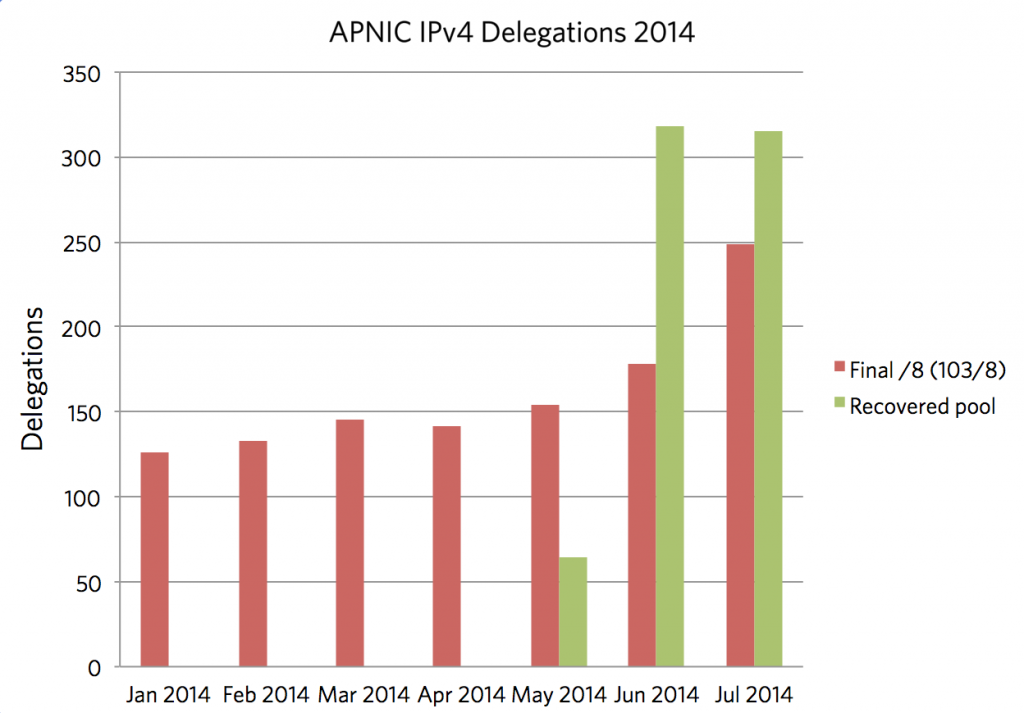
When APNIC received a /11 block of IPv4 addresses from IANA’s Recovered Pool in May, we were curious to see what impact this would have on delegations – and we thought the community might be too, so here’s what we’ve seen so far. APNIC made 1,060 delegations in June and July, which is more than triple the normal demand.
To recap for those who missed it: IANA’s allocation of 2,097,152 IPv4 addresses to APNIC triggered the Prop-105: Distribution of returned address blocks policy and created a second IPv4 address pool at APNIC on 21 May 2014. Eligible APNIC account holders can request and receive an additional delegation up to a maximum of a /22 of address space from this new pool.
Our team expected there to be demand for the additional addresses, and this certainly played out. But what was REALLY interesting was that the demand for addresses from the final /8 (103/8) also rose significantly during this time.
Why did that happen? I don’t have a concrete answer, other than to speculate that the awareness generated globally by the IANA announcement that IPv4 was getting closer to running out entirely sparked some network operators into action to grab their entitlement (a /22) from 103/8.
Was the increased demand mostly from new networks? We’re compiling more data to answer this question, and will provide an update at APNIC 38 in Brisbane. But from what we can tell so far, there appears to be more existing network operators than new ones applying for the address space. There’s also strong demand from the most populated economies in our region, such as China and India.
Whether this trend continues in the following months will be interesting to watch. At the time of writing, LACNIC was down to 0.229 of a /8 and ARIN had 0.72 of a /8 worth of IPv4 left. Globally, the numbers are certainly starting to get low.
While the transition to IPv6 looms for all network operators in the Asia-Pacific, the resource policy developed by the APNIC community aims to ensure that new and emerging network operators can continue to receive a small amount of IPv4 for many years to come so they can connect to both IPv4 and IPv6 networks during the IPv6 transition.
For more information, see the IPv6 Program.
The views expressed by the authors of this blog are their own and do not necessarily reflect the views of APNIC. Please note a Code of Conduct applies to this blog.


Pingback: APNIC receives an IPv4 /12 from IANA | APNIC Blog